Garri processing in West African province/(Cyanide contain in cassava and its effects to the body)
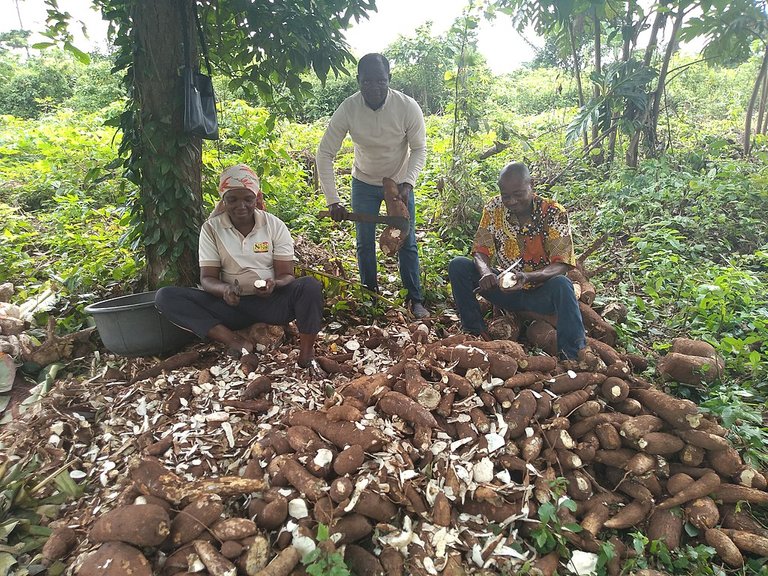
Source:Wikipedia, author:Fachab, CC BY-SA 4.0
As far as African exists, most especially in the province of West Africa, cassava remains one of the staple energy giving food commonly found in this region.
From the estimate, Nigeria being one of a country located in the Western region of Africa is the world's largest producer of cassava; yielding about 59.5 million tonnes followed by Thailand.
Cassava understood as a source of carbohydrates is an annual crop and documentation has shown that this crop can survive in any environment but the rate at which it is cultivated in the tropical and subtropical localities is quite vigorous.
Nigeria process cassava into a fine and edible coarse flour called garri.

White and Yellow Garri in bowls on Table top with Nigerian Naira
source
This flour can be achievable via the means of mechanical techniques in which I will reveal to you today.
Just continue reading till the end
How do Nigerians process cassava into garri?
Perhaps, you may have seen the west African garri or probably you may not be familiar with this product.
However, you should learn that the west African garri is made from the tuberous roots of the cassava crop. This is obtained by a series of domestic processes which can take up to a good number of days to complete. It can take up to 2 to 7days depending on the type of the garri being made.
Making a garri flour requires that the cassava tubes must be harvested and then the manual (since there is no available suitable machine to achieve the task of removing this detachable flesh of the cassava tube) removal of the outer brown rough flesh.
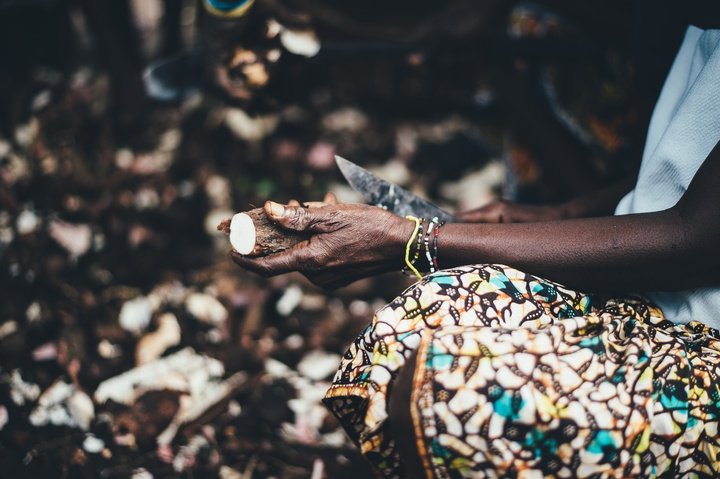
Source
A lady peeling a cassava tuble
The most important or wanted part of the cassava tube is the white pulp which is usually obtained after you have peeled off the outside cover of the tube. The external surface of the cassava tube is been removed without difficulty when freshly harvested but can be tough to detach when left for some time especially during the harmattan period as in the case of Nigeria.
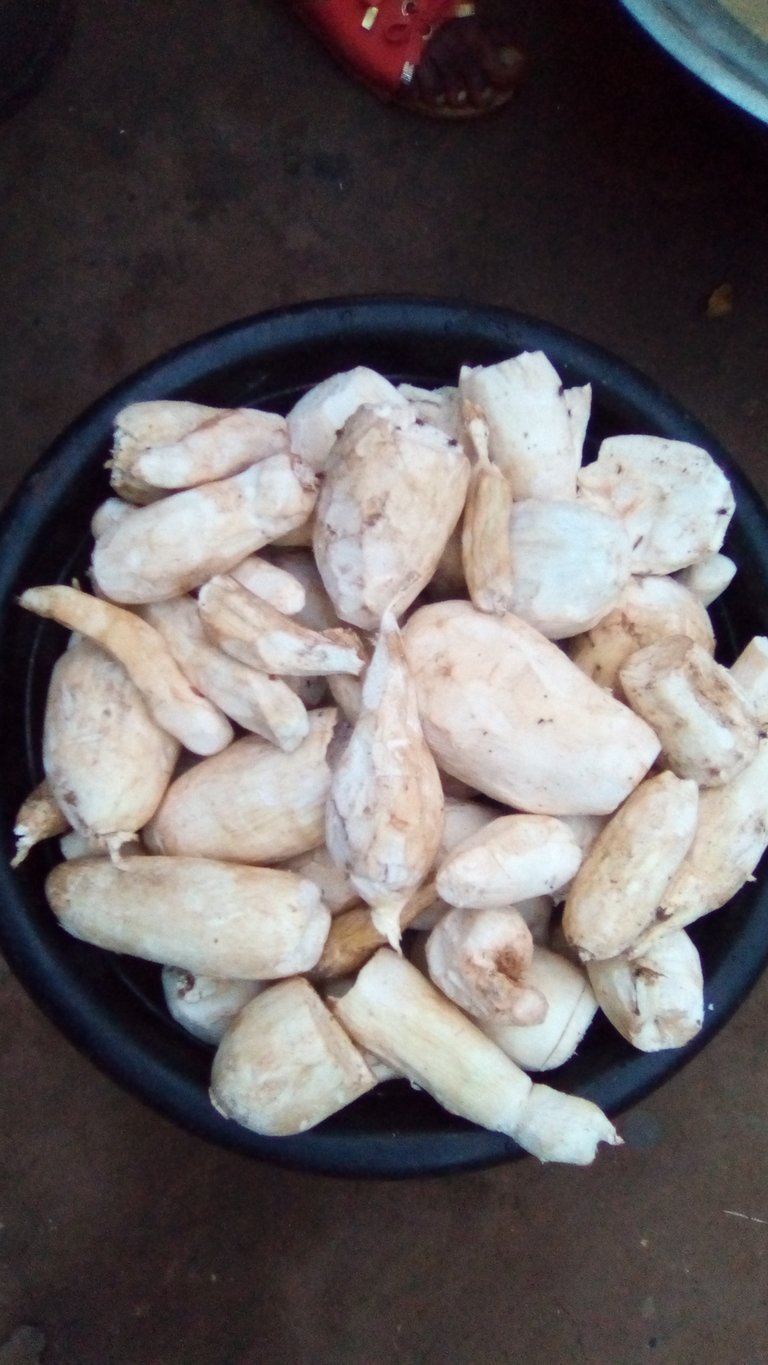
This is a white cassava pulp yet to be washed
After the white pulp is ready, we proceed to any accessible mashing Center to grind the white pulp into mash, but before the grinding, you must first of all, wash thoroughly the pulp to remove dirty and other soil particles from gluing to the white pulp.
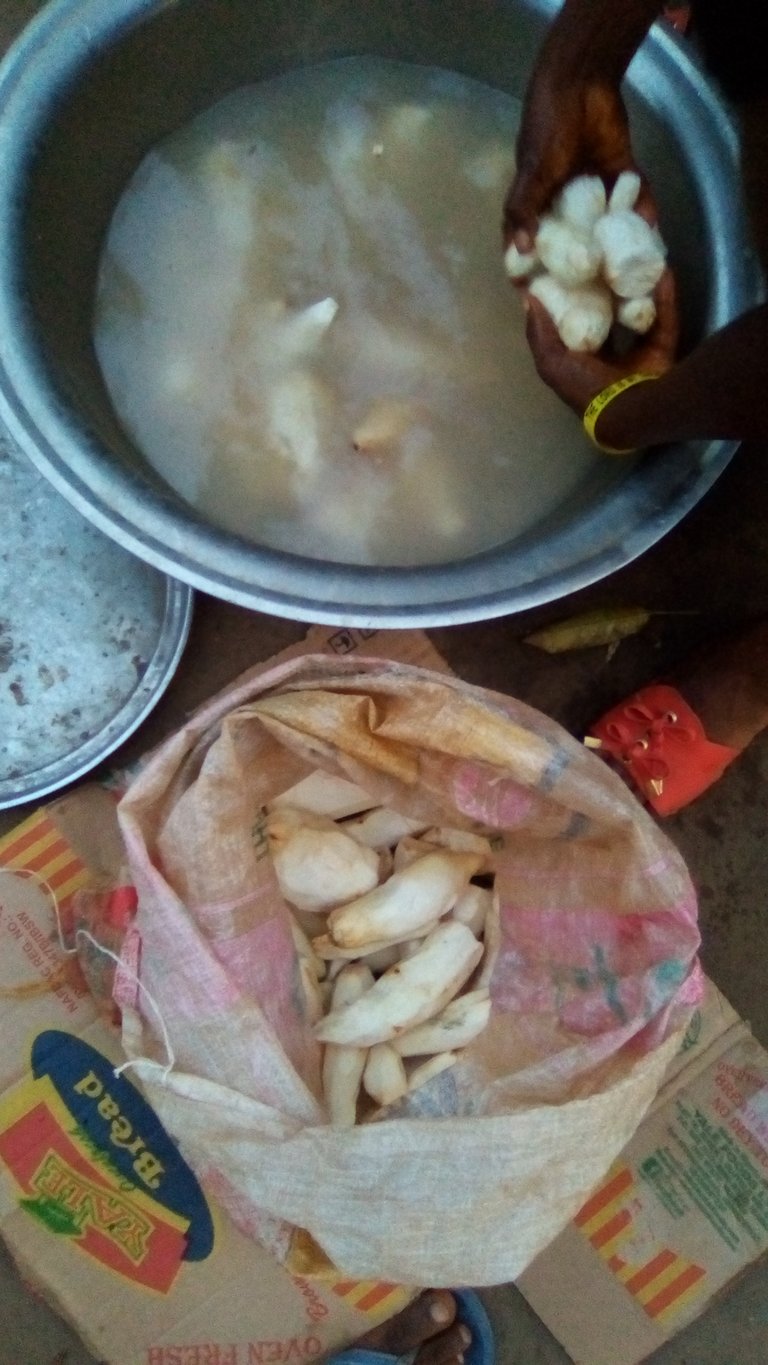
The picture was taken when my younger sister was washing the white cassava pulp
Although I could not find any reasonable picture to illustrate this machine but, a local device is being used for the grinding to attain a satisfactory result since hand-grated is not proficient to offer the fine mash needed for the garri.
During this time, palm oil is being mixed up with the mash if you desire to have a yellow-colored garri at the end.
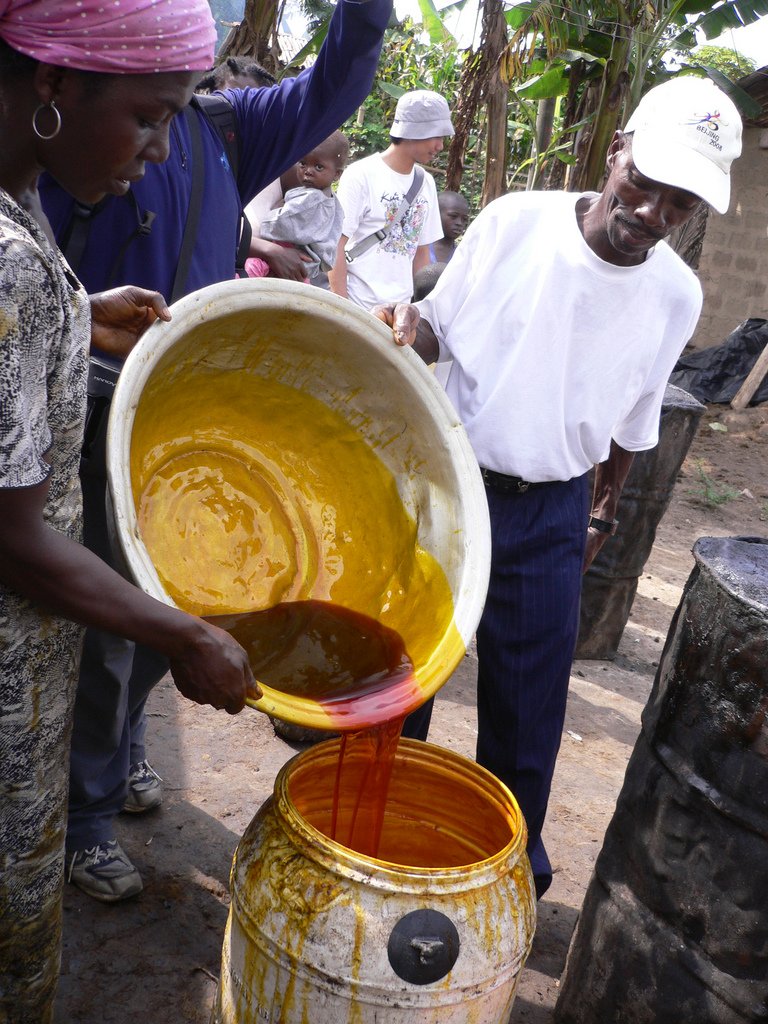
A woman holding a bowl of red palm oil
Source,CC BY-SA 2.0
Apart from that, putting in oil to the garri helps in the removal of cyanide content found in cassava roots and oil gives a unique aroma and taste to the garri as well.
But you can decide not to add palm oil to your mash if you desire to have a white-colored garri.

A bowl of a white-coloured garri. you can see that no oil was added to it
Source
Basically, a garri with no oil occurs to be sharp sour to the taste, and less starchy too.
The mash produced after the grinding is completed is transferred into a porous or less compact sack and then fasten with a string or rope. The tied sack is then put in an adjustable machine for about 24hrs to get rid of water. This act is to ferment the mashed white cassava pump as this aid in the reduction of the toxic cyanide from the cassava.
The water that is removed from this stage is apparently rich in starch contents and if properly conserved, pure raw starch is collected from the water.
The sack containing the massed cassava would remove completely all the water stored up in the cassava after 24hrs and then unpacked from the pressing machine. Usually, the mashed is very dried at this point.
The dried, fermented grated cassava is now put in any filtering material to separate the large debris and fibers from the dried mash. This technique helps us to obtain the smaller size mash needed for further processing.
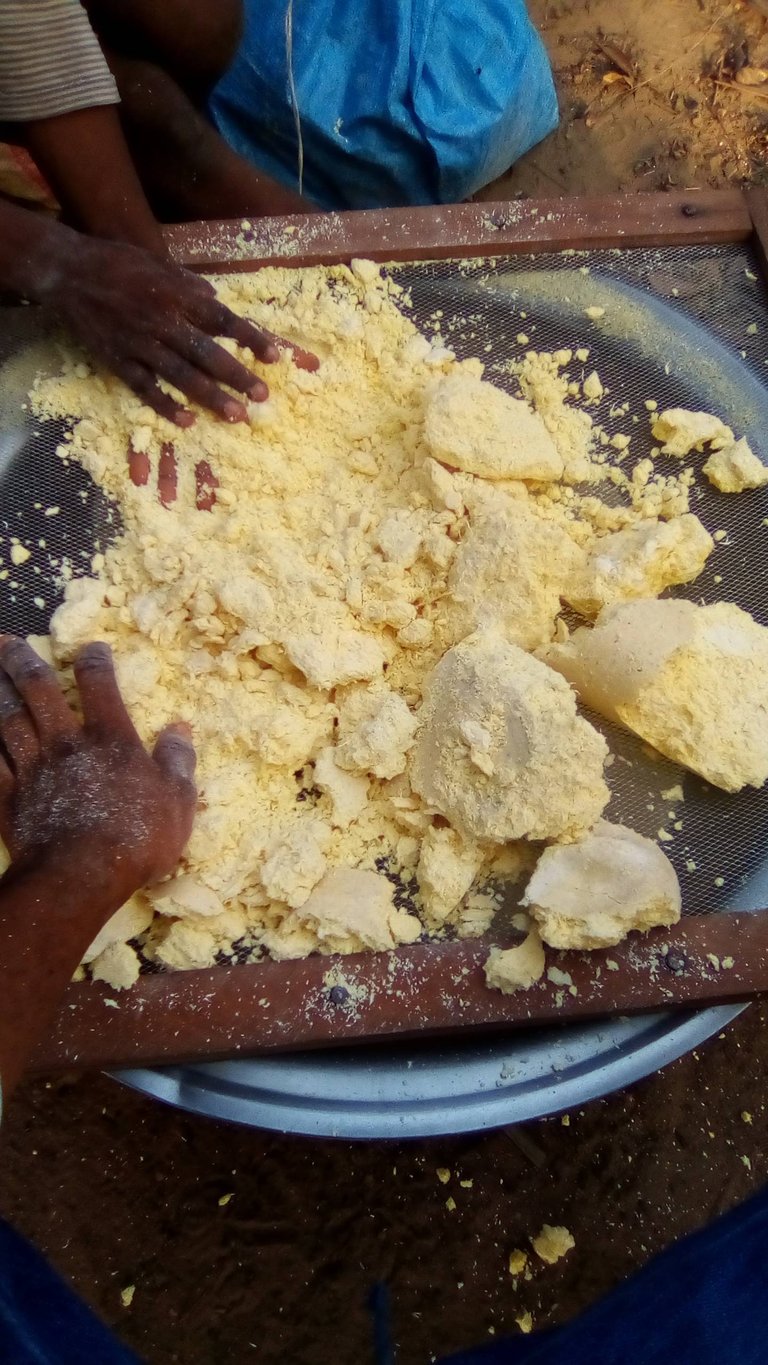
Filtering out the smaller dried mash cassava
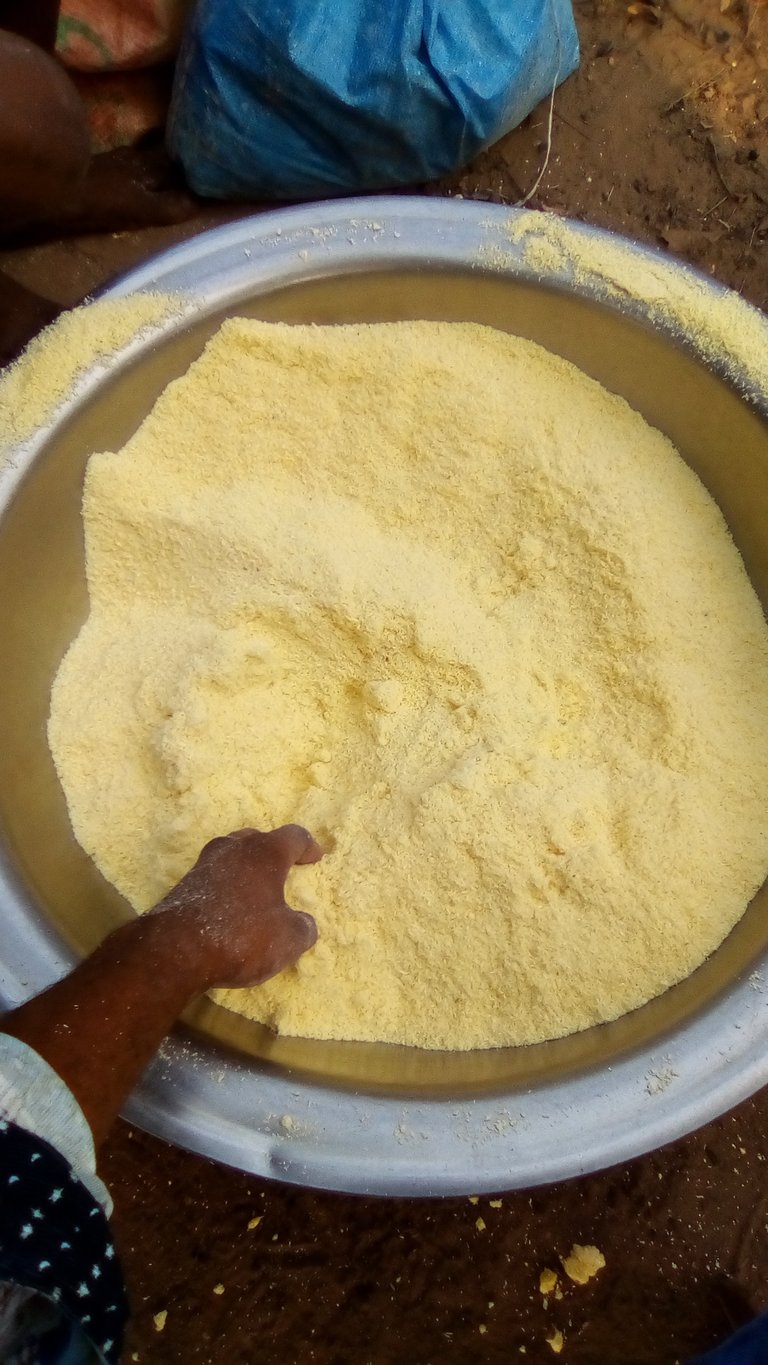
This picture is showing the filtrate
The filtrate collected from the filtration is then fried in a big frying pan.
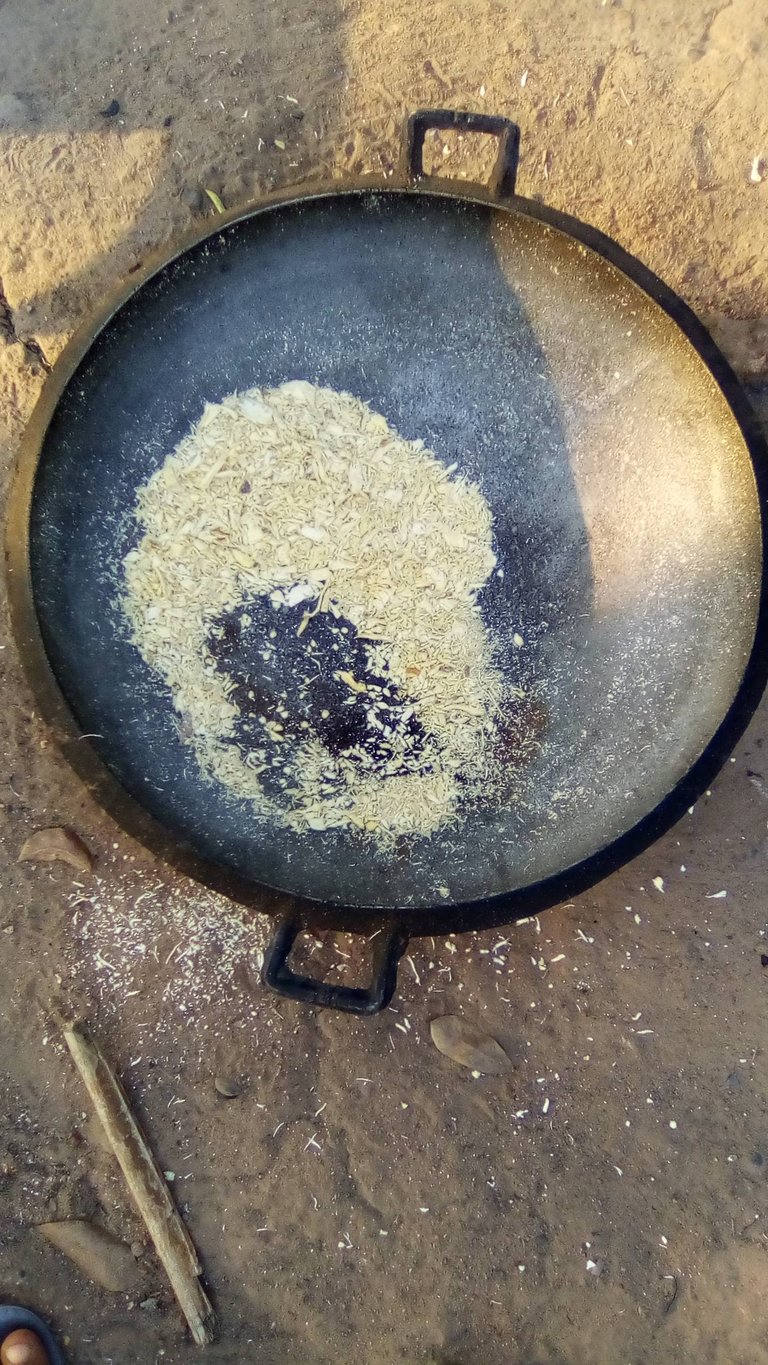
A large frying pan
Before then, the frying pan is placed on the source of fire and then proceed with adding little quality of the filtrate to the frying pan.

you can see the source of fire and the frying pan on it
This is a gradual process as the filtrate in the frying pan is stir continuously until it becomes stiff and dry enough to be break easily.

The woman wanted to obtain a white-coloured garri, looking closely. you will observe that the woman is making use of a different fire resource
Wikipedia,CC BY-SA 4.0
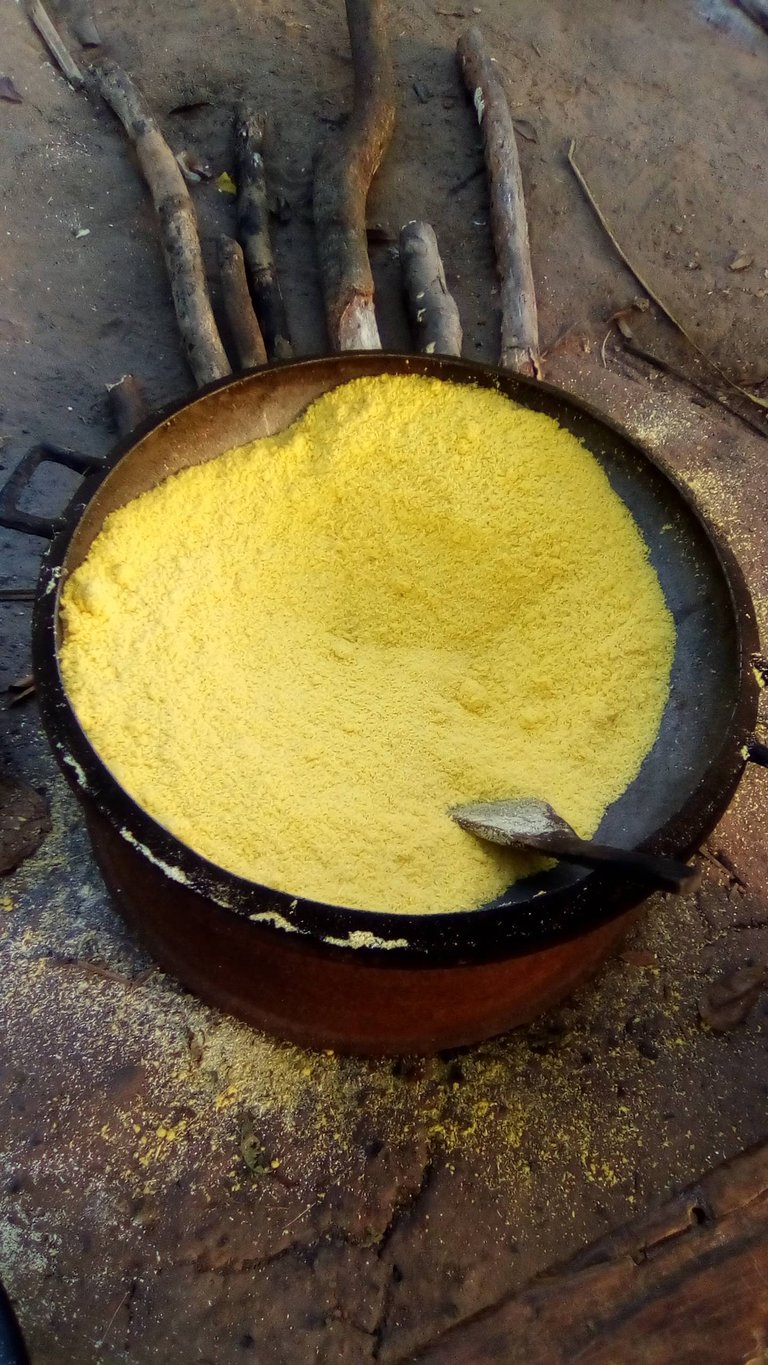
The filtrate changed colour after frying it for some time, although I added a little quality of red palm oil during mashing
You must continue the constant circular movement of the wooden flat spoon to prevent burning.
There is no special time that regulates when the frying is done, however, the pleasant aroma it gives off and the crisp of the cassava help us to indicate when the frying is in its due course.
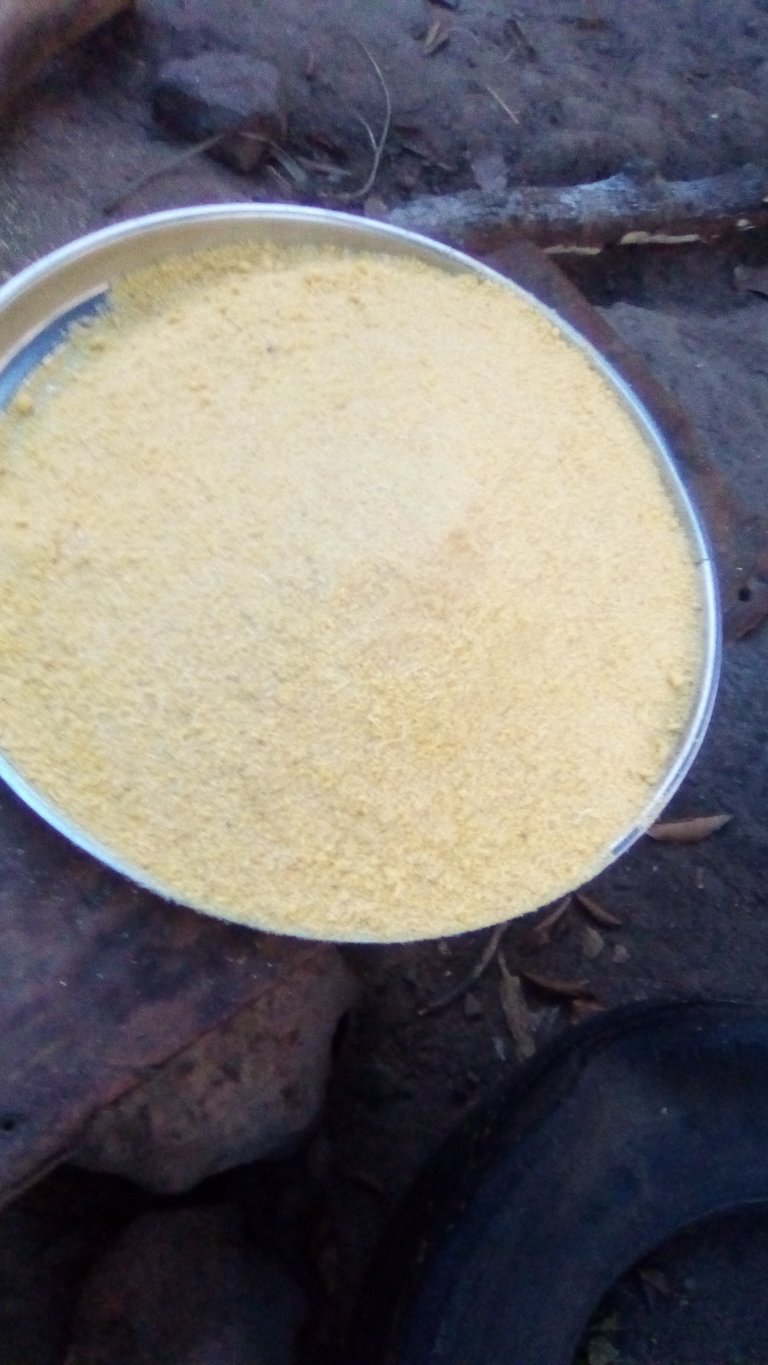
This was when the frying was done.
This dry product is what we called garri and it can be reserved for a very long time.
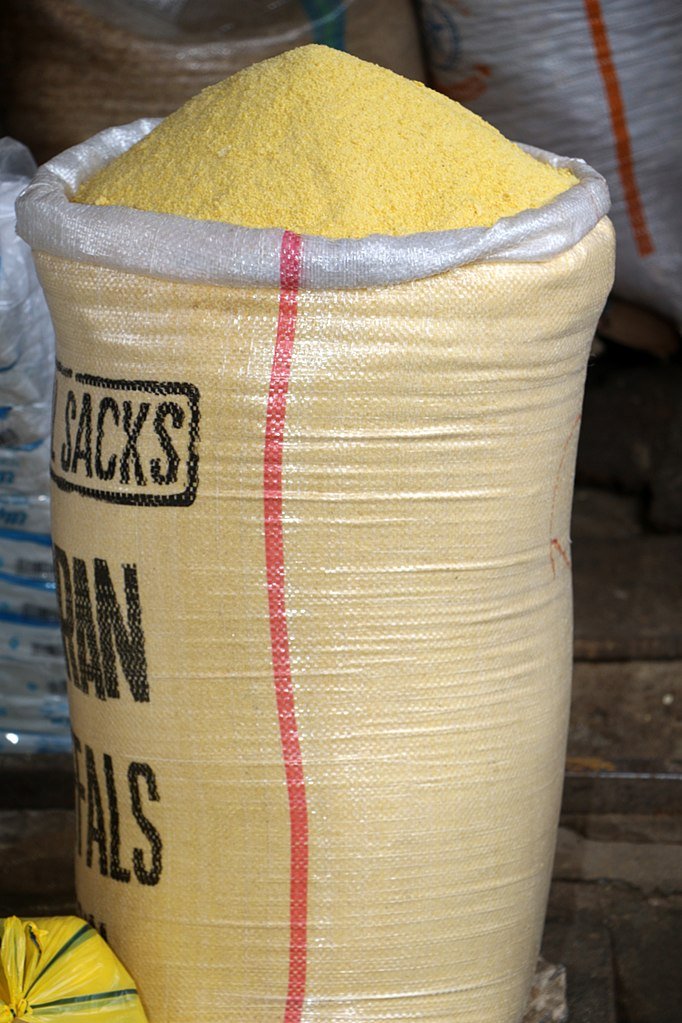
A sack of yellow garri
Wikipedia, CC BY-SA 4.0
Is Garri harmful since it contains cyanide?
Cassava which is the source of garri contains a toxic chemical understood as cyanogenic glycoside which is made up of two substances; linamarin and lataustralin. Because of these chemicals, consumption of cassava products is brought to a limitation to stave off side effects of the toxic cyanide.
According to expects, independent cyanogenic glycoside alone is not that powerful to cause harm to the body but due to enzymatic reaction through the means of beta-glucosidase ensued by maceration of the tissues of plants as they are absorbed by microflora. Under this catabolic reaction, cyanogenic glycosides are broken down to divulge harmful hydrogen cyanide.
The discharged hydrogen cyanide is so active in destroying plant and animal cells and the level of this chemical in plant relies solely on how capable the plant is when it comes to the production of this toxic chemical.
In the case of a cassava plant, it has been recorded that the two common variations of this particular plant(that is sweet and bitter cassava) contain a distinct amount of cyanogenic glycoside.
Scientists proved that the bitter cassava root contains about 400 mg per kilogram of cyanogenic glycoside while the sweet cassava toot has less than 50mg per kilogram of this toxic chemical.
Symptoms of cyanide poisoning
Consuming cassava products daily for a long time can evoke malnutrition since cassava does not contain all the required nutrients for a balanced diet except starch which is rich in carbohydrates.
So when the amount of cyanide accumulated in the body becomes unbearable to the system, malfunctioning of the thyroid and neurological activities is enhanced.
Other symptoms of cyanide poisoning include; fast respiration, low blood pressure, dizziness, headache, discomforts in the stomach, vomiting, diarrhea, confusion, and convulsions.
At times, cyanide poisoning can result in death when the body can no longer condone the percentage of toxicity acquired already.
How can we make cassava root safe for consumption
So many methods have been adopted to get rid of cyanide contained in cassava roots. Since much of this chemical is not found in the sweet cassava roots, peeling and cooking of the roots at a very hot temperature can aid the removal of cyanide.
However, the bitter cassava root which contains an assaulting quantity of cyanide is made safe for consumption through extensive processes.
One of these processes includes the traditional preparation of garri in West Africa. This process is recognized to be an effective means of removing cyanide since the prolonged procedure enhances leaching and fermentation to occur followed by drying and thorough cooking to free the hydrogen cyanide gas.
Reference
•Cyanide Poisoning and Cassava
•Cyanide detoxification in cassava for food and feed uses
(Note: All images are owned by the author (@jsalvage) except those with separate citation.)


https://twitter.com/Jsalvage2/status/1343440989168541696
Dear @jsalvage, It is interesting! I first learned about cassava and garri.
If a person eats cassava without detoxifying it, will a person die?
I thought African people had a hard time making food. So, are you slim? 😄
By the way, what kind of food can you make with garri?
What foods do Africans mainly eat?
Hello friend, thank you for stopping by.well like i said earlier, if the level of cyanide in the body becomes unbearable, the system will easily break down and death may result. So it is better off when you ferment the cassava before consuming it.
The basic meal for Koreans is cooked rice.
https://en.wikipedia.org/wiki/Cooked_rice
Cassava cannot be eaten raw because of its toxicity, but rice is not toxic, so it is easy to eat and is nutritious.
Yes rice is a very good source of energy after millet and corn. But in African, especially in Nigeria, rice is just an occasional food.
You can say that again, hehe. Yes, i am slim although not that skinny 😀
African has many ways to consume their garri. It can be soaked with water, groundnut, sugar and milk to achieve a watery garri which you can drink.
Or
You can add hot water to the garri to get a solid texture that looks like a semolina. This solide product is then swallow alone with soup .
Thanks for your contribution to the STEMsocial community. Feel free to join us on discord to get to know the rest of us!
Please consider supporting our funding proposal, approving our witness (@stem.witness) or delegating to the @stemsocial account (for some ROI).
Please consider using the STEMsocial app app and including @stemsocial as a beneficiary to get a stronger support.
In my country this is processed and consumed, it is called cassava and it has been made since aboriginal times.